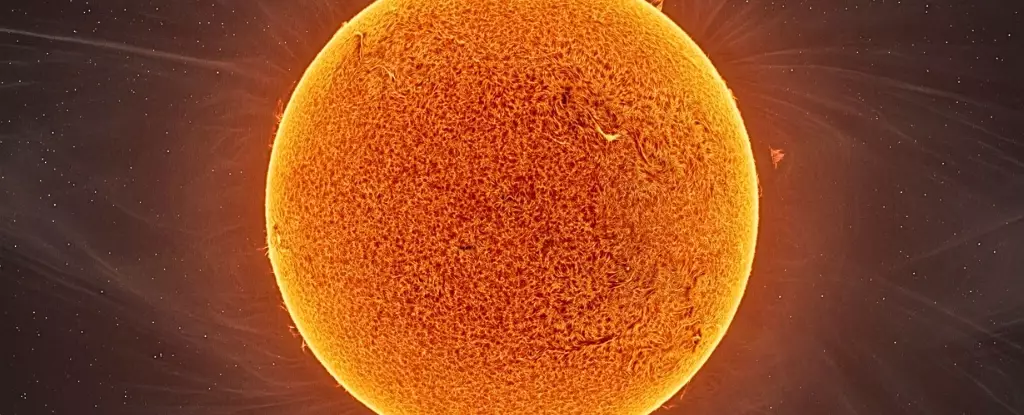The universe is an awe-inspiring expanse, brimming with the majestic dance of stars and their often-overlooked narratives. Recent research illuminating the phenomenon of starquakes—vibrations generated from bursting gas bubbles within stars—has opened a captivating avenue for understanding cosmic histories. This fascinating field of study, harnessed by the insightful observations from the Kepler Space Telescope’s K2 mission, reveals a previously hidden depth to our stellar neighbors, allowing us to glean knowledge about their evolution that surpasses our prior imaginations.
Starquakes function akin to the music of the cosmos, each star creating a unique melody defined by its internal structure. The insights gleaned from analyzing these celestial vibrations provide astronomers with crucial clues about the lifecycle of stars like our Sun. While the concept of detecting vibrations in stars might sound like a fanciful idea, it transforms into a striking reality as we contemplate the significant implications of understanding starquakes within the stellar life cycle.
Dimensional Depths: A New Era of Understanding
The M67 star cluster, located nearly 3,000 light years away from Earth, serves as a pivotal focal point for astronomers. This cluster encompasses stars resembling our Sun in chemical composition. It stands as a tangible repository of stellar evolution, offering a remarkable glimpse into our galaxy’s history and future. For far too long, researchers have relied on vague assumptions regarding resonant frequencies in giant stars. The recent discoveries challenge those preconceptions head-on and elevate starquakes as significant agents in understanding the intricacies of stellar interiors.
The resonant frequencies detected in stars resonate deeply with their mass, chemical constitution, and evolving environments. Larger stars emit slower, deeper sounds, while their smaller counterparts produce agile, higher-pitched vibrations. Each star, much like an orchestra, harmonizes various frequencies, sending echoes across its solar domain. The identification of distinctive frequency signatures, particularly the small spacing of resonant frequencies, is pivotal for astronomers deciphering the mystery of aging stars.
The Record of Change: Melodies of Stellar Transformation
In younger stars, these frequency signatures serve as cosmic markers, offering insight into the remaining hydrogen poised for nuclear fusion. However, unraveling the tale of senior stars presents a different challenge. Red giants, having exhausted core hydrogen, ignite fusion processes within a surrounding shell. Researchers have long assumed minimal value in evaluating the small spacings of red giants, but new findings dispel that notion with enlightening revelations.
The emergent patterns indicate that these spacings clarify how internal fusion zones alter as the aging process unfolds. This progress is akin to tuning a musical instrument—each adjustment resonates with deeper meaning. The unexpected realization of stalling frequencies introduces a metaphorical record player, allowing scientists to detect points in the stellar life cycle where changes manifest dramatically.
This discovery illustrates a definitive moment when a star’s outer envelope becomes so substantial that it constitutes 80% of its total mass. The deepening turbulence in the sensitive regions beneath this envelope causes significant shifts in sound wave propagation, enriching our comprehension of stellar mechanics.
Starquakes as Cosmic Timekeepers
The implications of starquake research stretch far beyond understanding the individual stars within clusters like M67. By employing these seismic observations, astronomers can paint a more coherent picture of the Milky Way’s inception and evolution. Our Galaxy comprises a jumbled history, marked by the merging of smaller galaxies and the formation of stars across varied timelines and spatial configurations. This newfound ability to precisely date stellar ages enables astronomers to reconstruct a cohesive narrative of our celestial origins.
Additionally, the insights gained from M67 provide a prophetic viewpoint for our Sun, foreshadowing the transformations it will undergo in the immortal expanse of time. By discerning the subtle melodies within these stars, we become better equipped to understand and predict the era of change awaiting our very own solar system. The beauty within this research lies not merely in amassed data but in the realization that these cosmic entities echo our own existence.
The urgency to revisit existing datasets and reinterpret their hidden depths cannot be overstated. The exquisite tunes of our universe await our attentive ears, and the potential for groundbreaking revelations lies within our reach. As our perception of the cosmos shifts through the lens of starquakes, we find ourselves invited into an intricate ballet between history, science, and the just-revealed narratives coursing through the celestial realm. This rebirth of astronomical insight stimulates a profound appreciation for our universe and prompts us to explore even deeper truths hidden within the fabric of space and time.


Leave a Reply